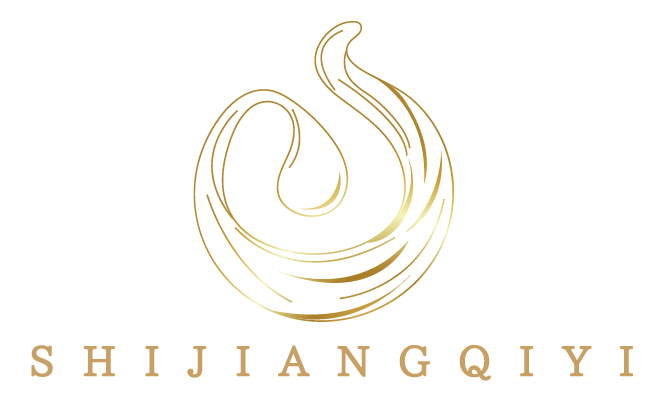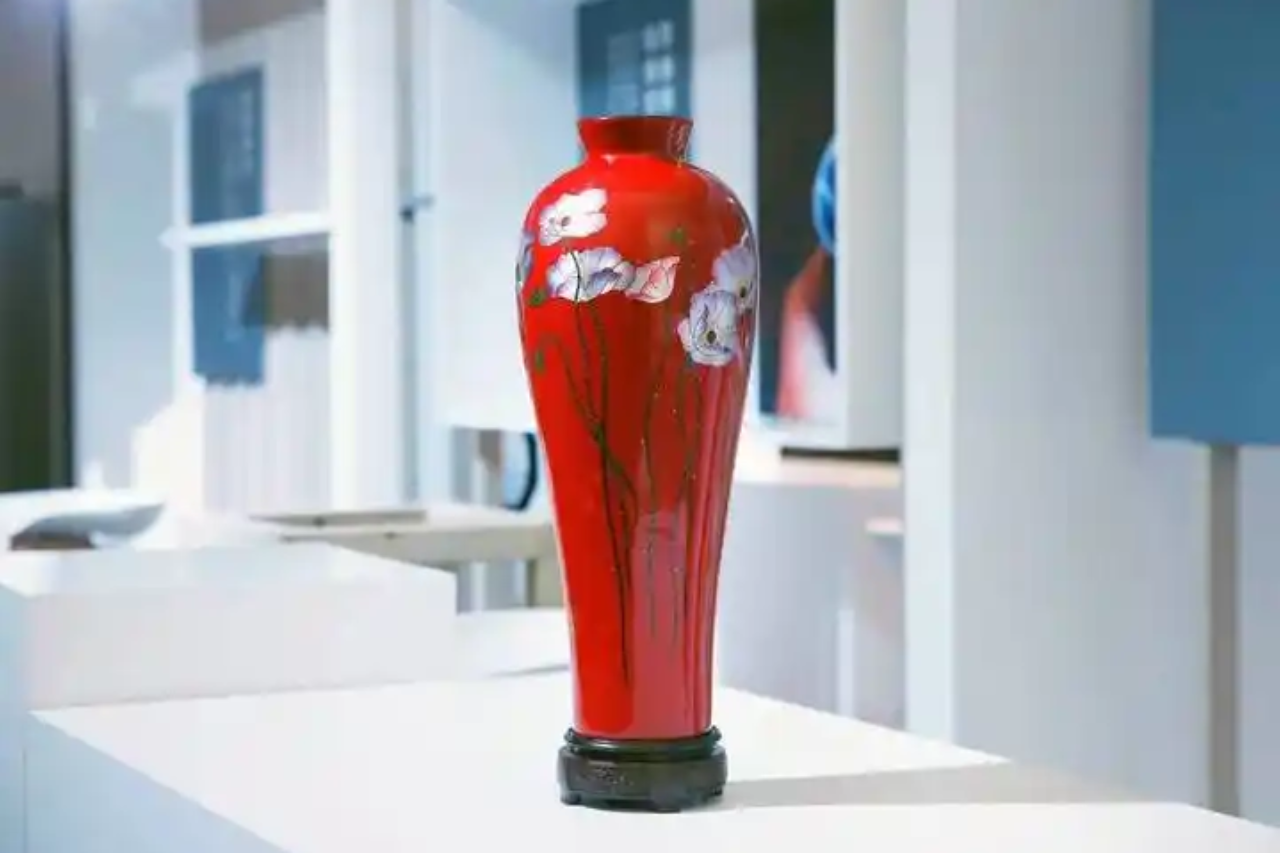In the artistic river of the Chinese nation, lacquerware shines like dazzling pearls, exuding a unique and captivating charm. Among them, Fuzhou Bodiless Lacquerware, Yangzhou Lacquerware, Pingyao Push-Glow Lacquerware, and Chengdu Lacquerware, with their distinct characteristics and long-standing traditions, have become outstanding representatives of Chinese traditional craftsmanship. Today, let us step into the marvelous world of these four great lacquer wares.
Fuzhou Bodiless Lacquerware: Light and Gorgeous Treasures of the Orient
Fuzhou Bodiless Lacquerware, an artistic treasure that originated in the Southern Song Dynasty, feels like a precious gift bestowed upon us by time. It boasts a light yet sturdy texture and simple, elegant shapes, while its rich and colorful decorations reveal a vibrant beauty.
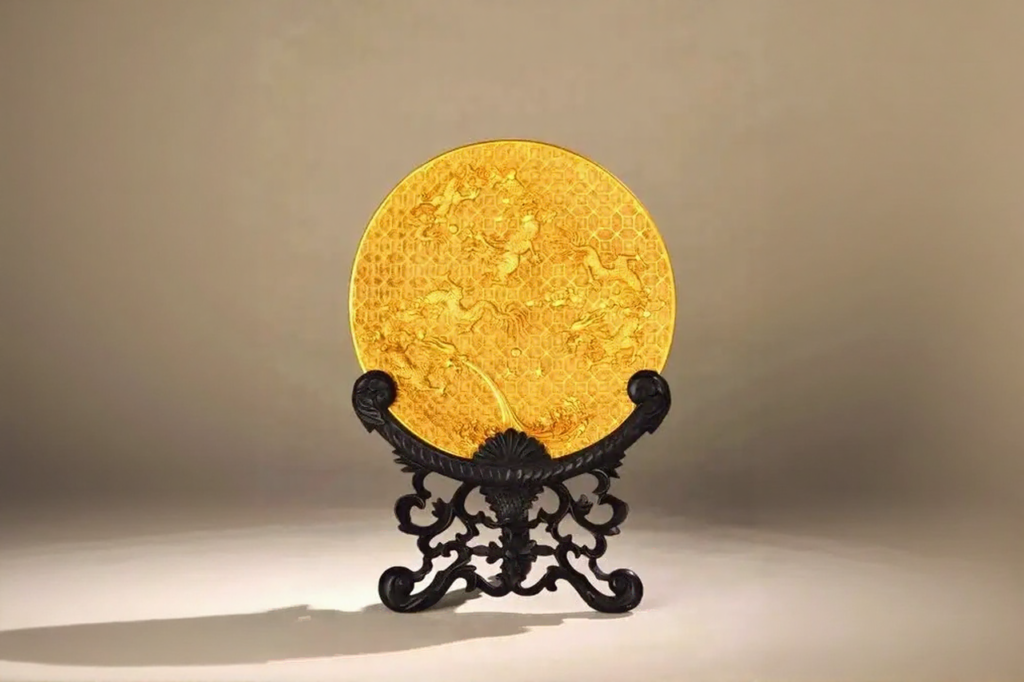
Imagine gently picking up a piece of Fuzhou Bodiless Lacquerware; its lightness will make you almost forget what you’re holding, while its sturdiness will amaze you with its quality. Its decorative techniques are unparalleled, with various traditional methods such as black push-glow, colored push-glow, thin-layer lacquer, and colored lacquer with gold tracing, making each piece unique. With a wide range of products, including polished lacquer paintings, screens, vases, tea sets, smoking sets, and stationery, whether placed at home as decoration or used as practical utensils, they can add an artistic touch to life.
It is no exaggeration that various individuals have described it as “precious black gemstones,” “rare treasures of the Orient,” “the light of lacquer decoration,” and “national treasures.” Fuzhou Bodiless Lacquerware, alongside Beijing’s Cloisonné and Jiangxi’s Jingdezhen Porcelain, is known as one of China’s “Three Treasures” of traditional crafts, demonstrating its high status in the realm of art.
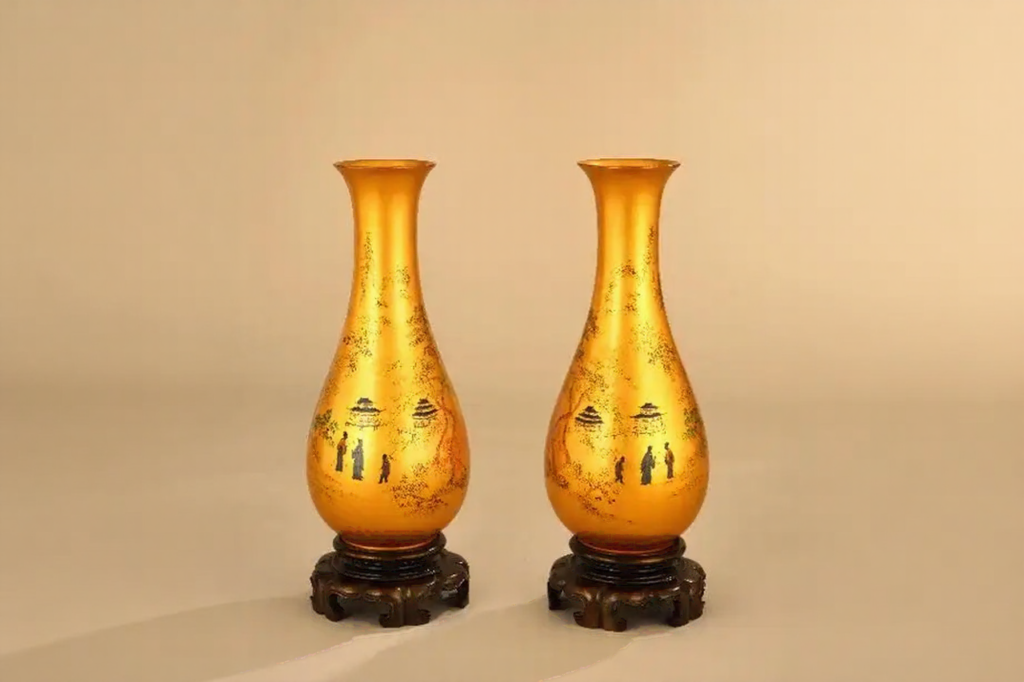
Yangzhou Lacquerware: A Magnificent Movement of Historical Sedimentation
Yangzhou Lacquerware, with a history of over two thousand years, tells a story as grand as an epic. As early as the Han Dynasty, it had already gained fame both domestically and internationally, becoming an envoy of cultural exchange.
During the Sui and Tang Dynasties, the craftsmanship of Yangzhou Lacquerware reached a new height of exquisiteness. The Ming and Qing Dynasties, however, were its flourishing periods, with the continuous emergence of new techniques. Traditional Yangzhou Lacquerware, based on exquisite lacquering, selected eight hundred kinds of precious materials such as jadeite, agate, coral, jasper, white jade, ivory, rosewood, mica, luminous shells, and gold and silver for its creation, making each piece a work of luxury.
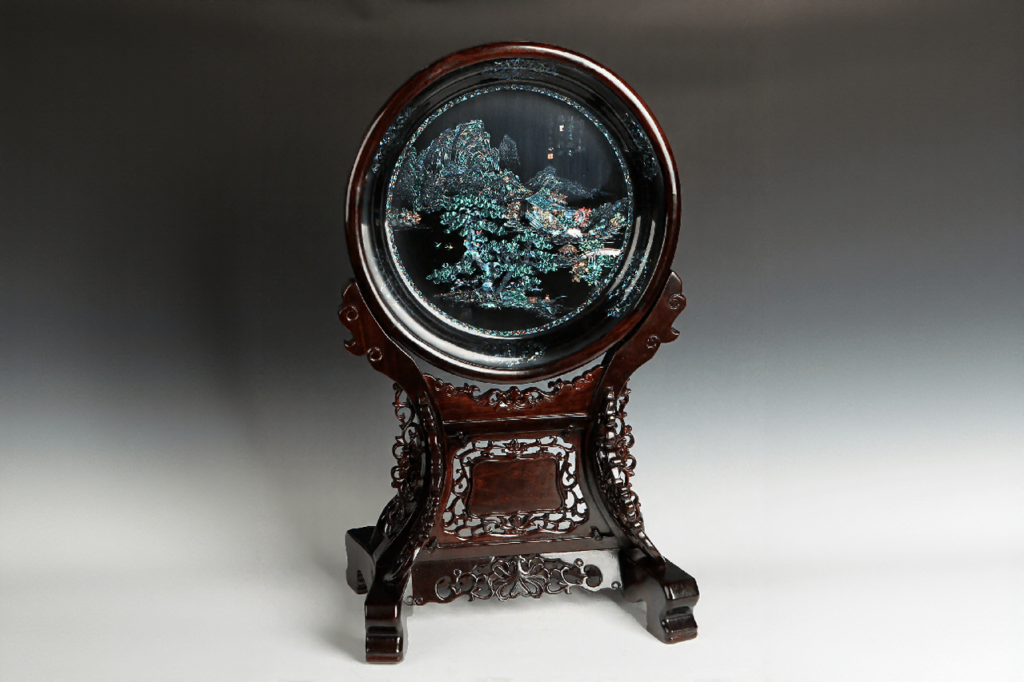
What is even more admirable is that the decorative patterns on the lacquerware extensively imitated the calligraphy and paintings of famous artists such as the “Eight Eccentrics of Yangzhou,” perfectly integrating the art of calligraphy and painting with lacquerware craftsmanship, greatly enhancing its artistic appreciation value. In the Qing Dynasty court archives, the “List of Offerings” from the Lianghuai Salt Administration in the fifteenth year of the Qianlong reign (1750 AD) recorded that the lacquerware contributed by Yangzhou to the Qing imperial court included various crafted lacquerware such as zitan (red sandalwood) Zhou-style, mother-of-pearl inlaid, carved lacquer, colored lacquer, filled lacquer, foreign lacquer, and colored gold tracing, demonstrating its noble status at the time.
Pingyao Push-Glow Lacquerware: A Brilliant Folk Treasure in the Palm
Pingyao Push-Glow Lacquerware, named for the luster achieved by hand-pushing, has become a dazzling pearl of folk craftsmanship with its unique production process and charming appearance. Its appearance is simple and elegant, while its painted decorations are resplendent, like a low-key yet luxurious aristocrat.
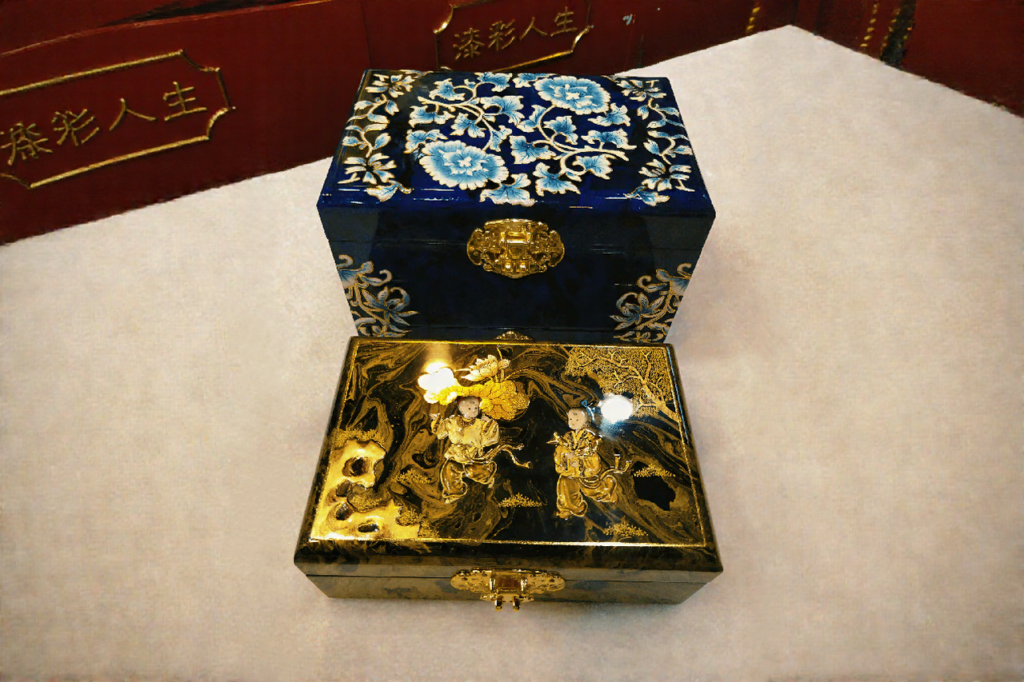
When you touch Pingyao Push-Glow Lacquerware, the delicate and smooth feel will enchant you. It also has the characteristics of being heat-resistant, moisture-proof, and durable, like a loyal companion accompanying you through long years.
Its production process is divided into five steps: wooden body making, ash body making, lacquering, painting, and inlaying, each step embodying the painstaking effort and wisdom of the craftsmen. The process in the lacquering workshop is particularly meticulous and complex. Each coat of lacquer is first wiped with water sandpaper dipped in water, and then repeatedly pushed and rubbed by hand until it feels smooth, with as many as seven coats and no fewer than six. The subsequent pushing and rubbing are even more detailed, requiring various methods to achieve a shining and radiant lacquer surface. This dedication and pursuit of craftsmanship have made Pingyao Push-Glow Lacquerware a model of folk art.
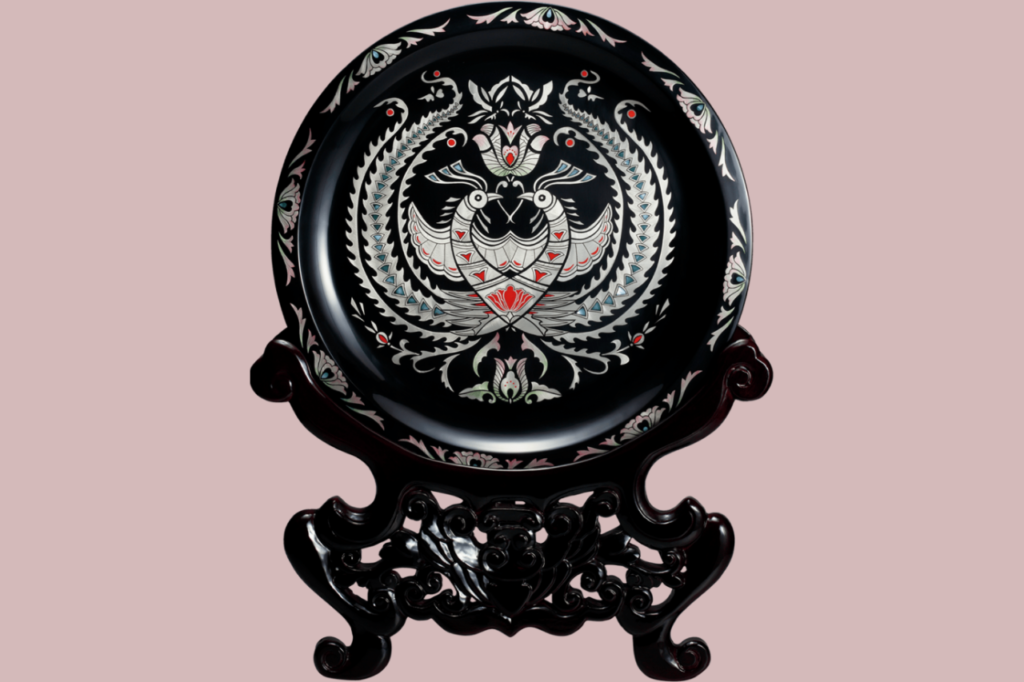
Chengdu Lacquerware: An Artistic Sprite of the Sichuan Basin
Sichuan, this magical land, is a famous producing area of raw lacquer, which has provided unique conditions for the birth and development of Chengdu Lacquerware. As early as over 2000 years ago, Chengdu Lacquerware already possessed the advantages of being crack-resistant, deformation-resistant, bright in luster, and strong in corrosion resistance, becoming an artistic sprite of the Sichuan Basin.
Chengdu Lacquerware has multiple varieties, including wooden body, hemp cloth bodiless, paper body, and plastic body, with beautiful and elegant shapes and exquisite craftsmanship. Its lacquer surface is as clear as water and as bright as a mirror, like a mirror reflecting the wisdom and creativity of the people of Sichuan. “Carving and Filling with Colors” is its main craft characteristic. Craftsmen use superb skills to carve exquisite patterns on the lacquerware and then fill them with gorgeous colors, making each piece full of vitality and dynamism.
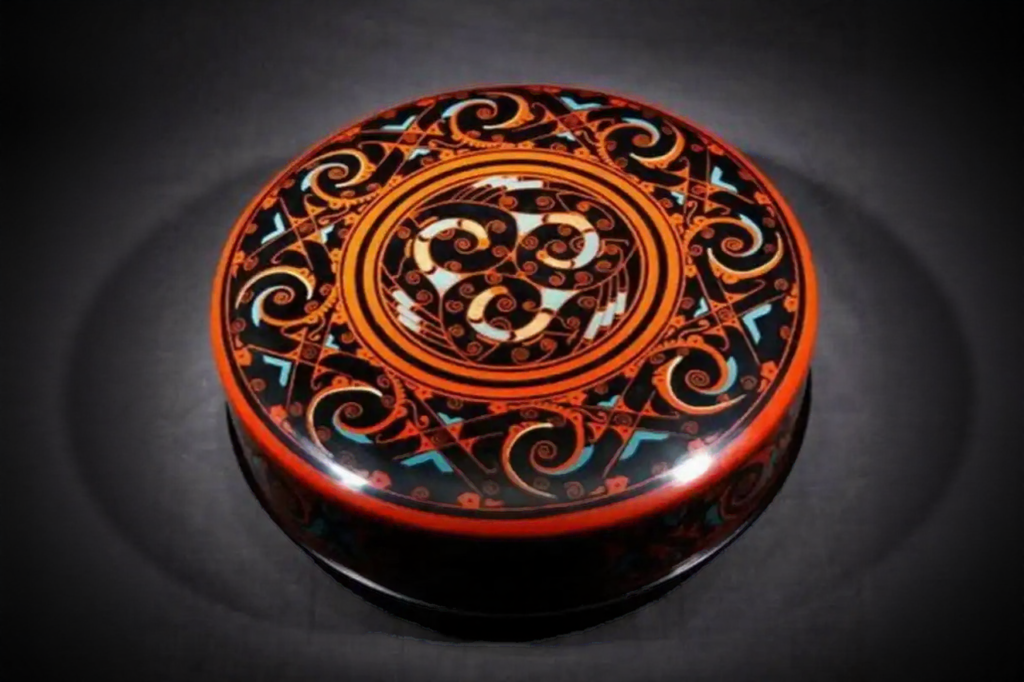
The Han Dynasty lacquerware unearthed from the famous Mawangdui tombs in Changsha, Hunan Province, was inscribed with the marks “Chengshi Cao” and “Chengshi Bao,” representing production in Chengdu. During the Warring States period, it was already sold as far as Pyongyang (ancient Lelang Commandery) in Korea, fully demonstrating the influence and popularity of Chengdu Lacquerware at that time. Today, the Hall of National Treasures of the China Arts and Crafts Museum has collected seven Chengdu lacquerware artworks, allowing more people to appreciate the charm of this ancient art.
China’s four great lacquer wares are treasures of Chinese traditional craftsmanship and the crystallization of the wisdom of the Chinese nation. In the tide of the times, although they face various challenges, they still adhere to their traditions, continuously innovating and developing. Let us cherish these valuable cultural heritages so that the brilliance of the four great lacquer wares can continue to shine in the new era, adding more artistic color to our lives. If you are also interested in these beautiful lacquerwares, you may wish to visit museums or craft shops to witness their splendor and feel the charm from ancient times.
